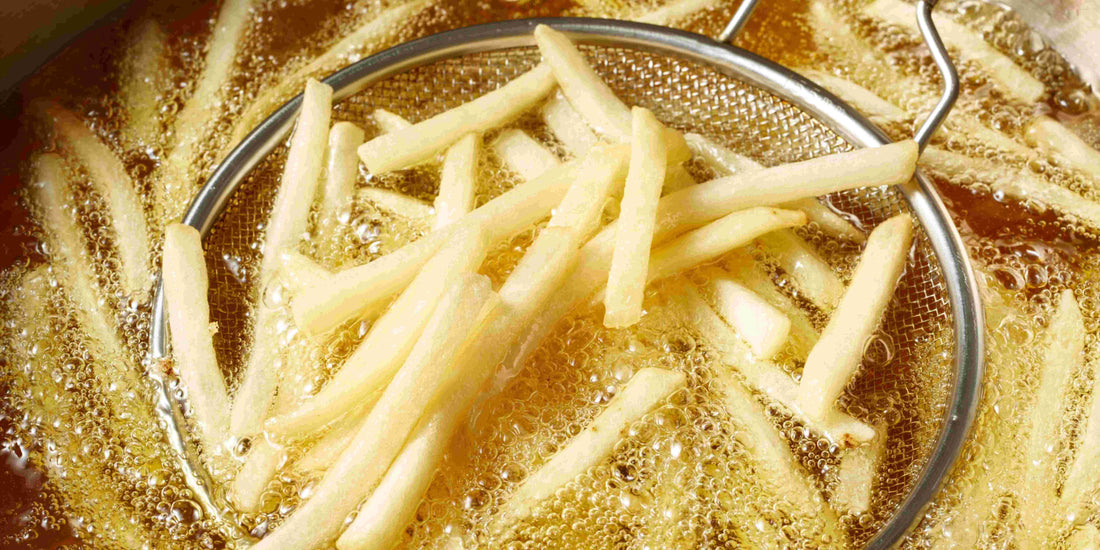
The Importance of a High Smoke Point in Tallow
Share
When it comes to cooking fats, tallow—an age-old staple derived from rendered animal fat, typically beef or lamb—has made a remarkable comeback in modern kitchens. Praised for its rich flavor, nutritional profile, and versatility, tallow stands out among other cooking fats for one key characteristic: its high smoke point. But why does this matter? In this blog, we’ll explore the significance of tallow’s high smoke point, how it impacts cooking, and why it’s a game-changer for both taste and health.
What Is a Smoke Point, Anyway?
Before diving into tallow’s virtues, let’s clarify what a smoke point is. The smoke point of a fat or oil is the temperature at which it begins to break down, producing visible smoke. When this happens, the fat starts to oxidize and decompose, releasing free radicals and potentially harmful compounds like acrolein. Not only does this affect the flavor of your food—turning it bitter or acrid—but it can also diminish the nutritional value of the fat and introduce health concerns if consumed regularly.
Cooking oils and fats vary widely in their smoke points. For example, extra virgin olive oil has a relatively low smoke point (around 163–190°C), while refined oils like avocado oil can reach up to 271°C. Tallow, depending on how it’s rendered and processed, boasts an impressive smoke point of around 204–215°C, making it a standout choice for high-heat cooking.
Why Tallow’s High Smoke Point Matters
1. Perfect for High-Heat CookingTallow’s high smoke point makes it ideal for methods like frying, searing, and roasting, where temperatures often exceed 177°C. Whether you’re crisping up potatoes, searing a steak, or deep-frying chicken, tallow remains stable at these elevated temperatures. Unlike oils with lower smoke points—think butter (around 149°C) or unrefined coconut oil (177°C)—tallow won’t burn or degrade, ensuring your food cooks evenly without that telltale “scorched” taste.
2. Preserves Flavor IntegrityWhen a fat exceeds its smoke point, it doesn’t just smoke—it alters the flavor of your dish. Burned oil can impart bitterness or a rancid aftertaste, masking the natural flavors of your ingredients. Tallow’s ability to withstand high heat means it enhances rather than detracts from your food. Its subtle, savory richness complements meats, vegetables, and even baked goods, delivering a depth of flavor that’s hard to replicate with other fats.
3. Healthier Cooking OptionWhen oils break down past their smoke point, they release free radicals—unstable molecules that can cause oxidative stress in the body when consumed. Over time, this oxidative stress is linked to inflammation and chronic diseases. Tallow’s stability at high temperatures minimizes the formation of these harmful compounds, making it a safer choice for frequent high-heat cooking. Plus, tallow is rich in conjugated linoleic acid (CLA) and fat-soluble vitamins like A, D, E, and K (especially when sourced from grass-fed animals), offering nutritional benefits that many seed oils lack.
4. Versatility Across RecipesA high smoke point gives tallow incredible versatility. You can use it to sauté vegetables at moderate heat or crank up the stove for a sizzling stir-fry without worrying about it breaking down. It’s also a fantastic fat for baking flaky pastries or frying donuts, where consistent heat is key to achieving the perfect texture. This adaptability makes tallow a go-to for home cooks who want one fat that can do it all.
5. Sustainability and TraditionBeyond its practical benefits, tallow’s high smoke point ties into its historical use. For centuries, people relied on animal fats like tallow because they were abundant, affordable, and effective for cooking over open flames—conditions that demanded a fat that wouldn’t easily burn. Today, choosing tallow honors that tradition while aligning with sustainable practices, as it makes use of parts of the animal that might otherwise go to waste.
How Does Tallow Compare to Other Fats?
To put tallow’s smoke point in context, let’s compare it to some common cooking fats:
• Butter: 149°C – Great for low-heat cooking, but burns easily.
• Olive Oil (Extra Virgin): 163–190°C – Better for dressings or light sautéing.
• Coconut Oil (Refined): 204°C – Comparable to tallow, but with a distinct flavor.
• Vegetable Oil: 204–232°C – High smoke point, but often highly processed and lacking nutrients.
• Tallow: 204–215°C – High heat tolerance with natural flavor and nutrition.
Tallow holds its own against refined oils while offering a cleaner, more natural alternative to heavily processed options like canola or soybean oil.
Tips for Cooking with Tallow
• Source Quality: Opt for tallow from grass-fed animals for the best flavor and nutrient profile.
• Storage: Keep it in a cool, dark place or refrigerate to maintain freshness, though its stability means it has a long shelf life.
• Experiment: Use it in place of butter or oil in your favorite recipes to see how it elevates the dish.
Conclusion
The high smoke point of tallow isn’t just a technical detail—it’s a practical advantage that makes it a powerhouse in the kitchen. From delivering superior flavor to supporting healthier cooking practices, tallow proves that sometimes the old ways are still the best. Whether you’re a seasoned chef or a curious home cook, tallow’s ability to handle heat with grace is reason enough to give it a spot in your pantry. So next time you’re firing up the stove, reach for tallow and taste the difference a high smoke point can make.
